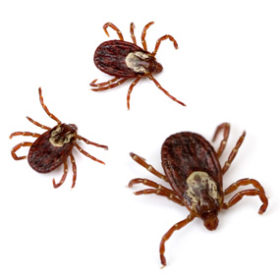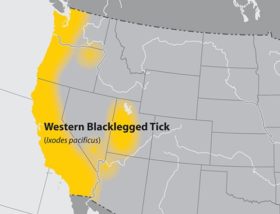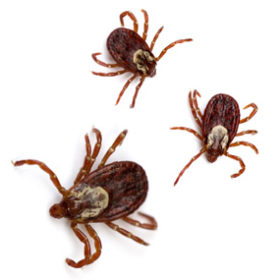 Lyme disease is a nationally notifiable disease, recognized and tracked by the federal government Centers for Disease Control and Prevention (CDC) for surveillance purposes. Surveillance data provides important information for assessing public health risks and allocating research dollars. Per the CDC, “The goal of Lyme disease surveillance is not to capture every case, but to systematically gather and analyze public health data in a way that enables public health officials to look for trends and take actions to reduce disease and improve public health.” However, these statistics have important implications for individual patients as well.
Lyme disease is a nationally notifiable disease, recognized and tracked by the federal government Centers for Disease Control and Prevention (CDC) for surveillance purposes. Surveillance data provides important information for assessing public health risks and allocating research dollars. Per the CDC, “The goal of Lyme disease surveillance is not to capture every case, but to systematically gather and analyze public health data in a way that enables public health officials to look for trends and take actions to reduce disease and improve public health.” However, these statistics have important implications for individual patients as well.
In this post, Bay Area Lyme Research Grant Director and Advisory Board Member Wendy Adams discusses some important changes to the CDC definitions of Lyme disease and some concerning implications for patients in the state of California.
——–
In January, the Centers for Disease Control and Prevention (CDC) in Atlanta published an updated Lyme Disease (Borrelia burgdorferi) 2017 Case Definition. Lyme disease case definitions have been published since 1995, and the previous definition was published in 2011. The CDC actually is not responsible for this definition; instead it is the Council of State and Territorial Epidemiologists (CSTE) that is responsible for Lyme disease surveillance. Each state has its own State Epidemiologist (see info about CA here). Despite being a federal agency, the CDC can offer input on these definitions but the CSTE is not obligated to accept those suggestions.
The case definition for Lyme disease is only intended to be used to determine cases for surveillance purposes and not to represent the full incidence of Lyme in a given area. However, this subtlety is often confusing for doctors who see these low case numbers as proof that they do not need to consider a Lyme diagnosis in CA. The low numbers also are convenient for insurance companies who inappropriately use this narrow definition as diagnostic criteria to deny coverage for patients whose cases don’t meet the definition.
Case Classification
There is one major difference between the 2011 and 2017 definitions which bears exploration — the subtle change in the specification of a “confirmed” case. See the case classifications below.
 Suspected
Suspected
- A case of EM (erythema migrans, a rash) where there is no known exposure (as defined) and no laboratory evidence of infection (as defined); or
- A case with evidence of infection but no clinical information available (e.g., a laboratory report)
Probable
- Any other case of physician-diagnosed Lyme disease that has laboratory evidence of infection (as defined)
Confirmed (2011 definition))
- A case of EM with known exposure, OR
- A case of EM with laboratory evidence of infection and a known exposure, OR
- Any case with at least one late manifestation that has laboratory evidence of infection.
Confirmed (2017 definition))
- A case of EM with exposure in a high incidence state (as defined)
- A case of EM with laboratory evidence of infection and a known exposure in a low incidence state
The problem here is in the definition of exposure.
See definition in 2011:
Exposure
Exposure is defined as having been (less than or equal to 30 days before onset of EM) in wooded, brushy, or grassy areas (i.e., potential tick habitats) in a county in which Lyme disease is endemic. A history of tick bite is not required.
Endemicity
A county in which Lyme disease is endemic is one in which at least two confirmed cases have been acquired in the county or in which established populations of a known tick vector are infected with B. burgdorferi.
And, here the definition in 2017:
Exposure
Exposure is defined as having been (less than or equal to 30 days before onset of EM) in wooded, brushy, or grassy areas (i.e., potential tick habitats) of Lyme disease vectors. Since infected ticks are not uniformly distributed, a detailed travel history to verify whether exposure occurred in a high or low incidence state is needed. An exposure in a high-incidence state is defined as exposure in a state with an average Lyme disease incidence of at least 10 confirmed cases/100,000 (inhabitant) for the previous three reporting years. A low-incidence state is defined as a state with a disease incidence of <10 confirmed cases/100,000 (see CDC-reported surveillance incidence tables here). A history of tick bite is not required.
The 2017 definition replaces the concept of an endemic county, defined as either having 2 confirmed cases or known tick vectors that are infected with B. burgdorferi, to one that specifies a state incidence level of at least 10/100,000 persons averaged over the past 3 years. Currently, there are only 15 states (including Washington DC) that meet that threshold. Under the 2011 guidelines, exposure in a county with known B. burgdorferi infections in ticks (in CA this is 42 of 58 counties) in addition to an EM was enough to qualify as a confirmed surveillance case. For perspective, California would need 3900 surveillance cases of Lyme disease per year to meet the new state threshold and be considered a high incidence state. Given that we now have about 100 surveillance cases reported a year, it seems unlikely for CA to ever qualify as a high incidence state despite 32M people living in counties defined as endemic for Lyme disease in the absence of new, more accurate tests.
Rationale
When I recently discussed this change with the California Department of Public Health Vector-Borne Disease Section (CADPH) and the CDC, they informed me of the reasons for the change:
- This new definition standardizes the reporting process across different states and takes out the confusing concept of “endemicity,” and
- By taking a diagnosis based on EM only out of the confirmed cases, there is a smaller chance that potential STARI (Southern Tick Associated Rash Illness) infections in the Southeast will be inappropriately counted in the Lyme disease surveillance numbers. The causative pathogen of STARI is not known, but it is thought to be transmitted by Amblyomma americanum, also known as Lone Star ticks.
Another interesting fact that I learned from my call with CADPH: of the approximately 100 reported surveillance cases for Lyme disease each year in CA (2014 saw 114 cases), only about 10% have no history of travel to a high incidence state (i.e., those 15 states that have >10 cases/100,000 inhabitants). That means approximately 10 cases of Lyme disease cases acquired in CA have EM and history of exposure in an endemic county (under 2011 definition). However, thirty-two million people in CA live in counties where B. burgdorferi -infected ticks have been found. To think that there are only 10 cases that are “good” enough to be reported seems to grossly misrepresent the likely numbers of actual cases in CA and is consistent with the possibility that an infection acquired in CA is far less likely to test positive on the standard two-tier test.
(It is also true that the meager number of cases reported to CA DPH could partially be attributed to the difficulty of reporting a case to the county health department. While the reporting procedure has just come online for all CA counties, previously reporting required filling out a written questionnaire, faxing it to the county health department, and a follow up phone call between the doctor and the county health nurse. Given the pressure on doctors’ time, this call might not always take place).
What does this change in definition mean?
It means that if you are infected in California, have an EM, have known exposure in a Lyme endemic CA county (again there are 42) but don’t test positive by the two-tiered test, you are no longer considered a confirmed surveillance case.

The CADPH employees believe that this new guideline only affects about 10% of yearly cases and they will report these cases as “suspected” cases. They believe this tradeoff is justified for the sake of harmonization across the country.
Importantly, in CA the two reasons for a change in the surveillance definition are not present. We have good data on which counties have B. burgdorferi-infected ticks and we don’t have the ticks that are believed to vector STARI.
Given the sheer number of people who may be exposed to Lyme in this state, this decision seems to go against the best interests of CA residents. A one-size-fits-all, nationwide approach to reporting Lyme disease cases will only further minimize the importance and diagnosis of this vector borne disease in CA.

When is the Ceres nano trap test going to be approved? An accurate and highly sensitive antigen test is clearly the answer here. The CDC’s ELISA / WB antibody testing scheme is dodgy and massively outdated. It’s hurting a lot of people and very probably obscuring an epidemic that’s several times larger than CDC estimates.
I got a *very* severe strain of Lyme, Babesia, and Bartonella in Tilden Park, a regional park in Berkeley that all the Lyme literate experts know is endemic of a severe strain of Lyme. I was bitten by a dog tick. Even though I knew it was very rare but still possible to get Lyme from a dog tick, because I had had Lyme before (but had managed to cure it), just in case, I took the tick to the County Health Department to get tested…Knowing that if I were to get sick, a positive test from the tick might be the only way I’d get treatment. The Health Department discarded the tick instead of testing it, because it was a dog tick, and they didn’t believe dog ticks could carry Lyme disease. It’s been proven that they can. (I’ve read about it in a medical journal). And, because they did that, I couldn’t find treatment until I was having torturous nerve pain attacks in my ribs, having seizures/tremors, vomiting every day, lost 30 pounds in two months, and was constantly being hospitalized ten years later. Of course, the doctor wouldn’t take health insurance, though, because of the problems with the system. He was an ILADS doctor. I’ve been in treatment for 7 years, and I’m much better, but since I got treatment so late, I can’t be sure I’ll ever be cured. If the Health Department hadn’t thrown out that tick and tested it like I paid them to do, I would’ve only been infected for 30 days, 16 years ago, and the HD would’ve had valuable data!
How do we change it so the number actually reflects how many in California do have Lyme & co’s? Even with positive by CDC standards have not been counted.
San Francisco Cty is not included in the 42-county CA count, yet we have 10 reported Lyme/co-infections over the past 20 years. Reports includes a tick infection in Golden Gate Park on the hillside behind the children’s playground where cars cross into the park at 19th and MLK – the person got Lyme and 3 co-infections – babesia, bartonella and ehrlichia. Another person got infected twice in their backyard at Monterey and Plymouth near the West Portal neighborhood – they got Lyme and babesia. Another got Lyme disease in their home in the Marina district from a tick off the dog.
Hi Robin,
Thanks for your comment, and sorry for the delay. Please make sure if you find more SF ticks to send them in to our Free Tick Testing. If we get positive ticks, the data will be recorded. Really important as you are right, no one really tests for ticks there.
Wendy
I live in the Central Valley and was bit three years ago by a tick at Shaver Lake. There are over fifty of us in my town alone. ….so far on Facebook
I live in the Central Valley and was bit three years ago …at Shaver Lake. There are over fifty of us in my town alone …. so far on Facebook
I am 65 years of age. I contracted STARI in 1996. I was a very healthy 44-year-old. I was ill for a year before I was diagnosed. My life has been 21 years of in and out of hospitals, many times in critical care. I am now on morphine to combat the unimaginable pain throughout my entire body. I am very blessed to be alive and would share with all my knowledge of this horrible disease. God bless! Jacksonville, Fla.